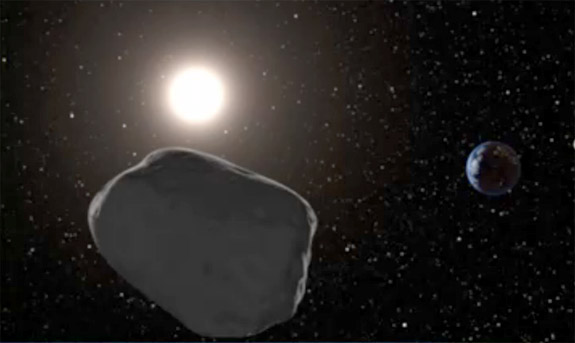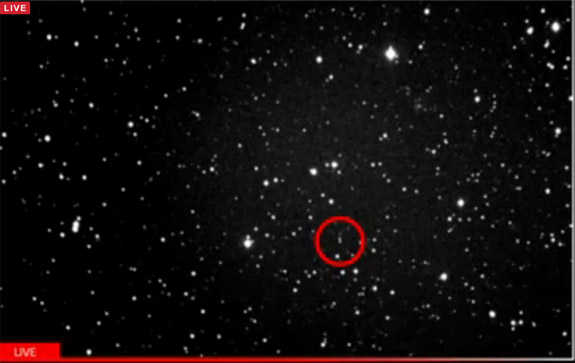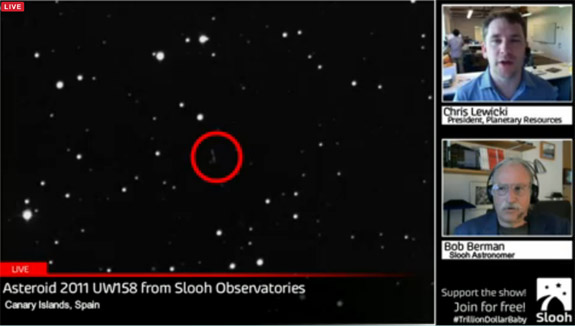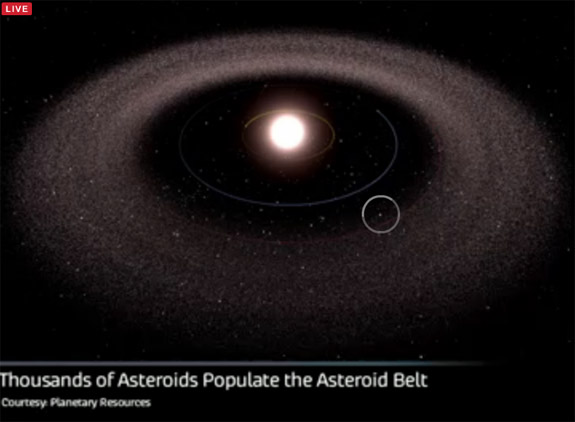A space rock containing $5.4 trillion in platinum flew within 1.5 million miles of the Earth last night, sparking speculation about the future of space mining.

The flyby of asteroid "2011 UW-158" was presented live via the Slooh online observatory, which used a team of telescopes in the Canary Islands to track the half-mile-wide, Rice Krispie-shaped chunk of celestial bling. Providing commentary and answering Twitter-generated questions were host Eric Edelman and Slooh astronomer Bob Berman.
The Slooh feed provided two live shots, one with the asteroid centered in the viewing window and the second showing the asteroid moving across the viewing field. Due to its size in relation to its 1.5 million-mile distance from earth, the asteroid appears as a tiny white dot.

The relatively close proximity of 2011 UW-158 — about six times farther than our Moon, but 30 times closer than our nearest planetary neighbor, Venus — prompted renewed interest in the viability of space mining.

Planetary Resources, an asteroid mining venture with financial backing from Google chiefs Eric Schmidt and Larry Page, has its sights set on 2011 UW-158. The company believes the asteroid's core contains 100 million tons of platinum worth $5.4 trillion. The company is also tracking similar asteroids in our solar system. Planetary Resources president Chris Lewicki provided realtime commentary during the live feed.
“It’s always fun when an asteroid whooshes past our world,” Berman said in a Slooh announcement. “What makes this unusual is the large amount of platinum believed to be lurking in the body of this space visitor. Can it be mined someday, perhaps not too far in the future?”

Officials from NASA believe that asteroids can be captured and brought into orbit around our Moon. Once captured, space miners would be able to collect valuable resources. NASA is confident this futuristic mining could be a reality by the year 2025. NASA says the elements present in asteroids — including rocket fuel and water — could be harvested by future generations in the quest to explore and colonize our solar system.
A spectrometer, measuring the intensity of light reflected from 2011 UW158, was used to determine the platinum composition of the asteroid. After last night's show, 2011 UW158 is not scheduled for another flyby until 2108.
Images: Screen captures of Slooh video feed; Planetary Resources.
No comments:
Post a Comment